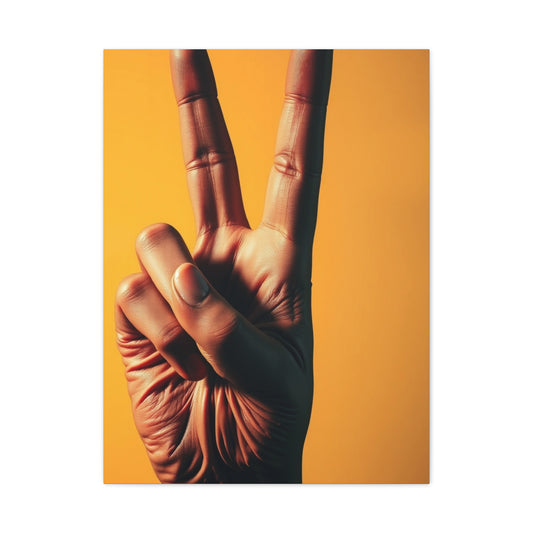Iconic Peace Sign Designs for Wall Art
In contemporary interiors, where tranquility and mindfulness are increasingly sought after, wall art featuring the peace sign has emerged as a powerful tool for transforming spaces. More than mere decoration, this emblem serves as a visual affirmation of harmony and compassion, infusing rooms with a sense of calm and intentionality. The peace sign, while historically tied to the nuclear disarmament movement, has evolved into a universal motif that transcends political and cultural boundaries. Its presence in wall art, whether in bold, colorful canvases or subtle monochromatic prints, invites viewers to pause and reflect, turning ordinary rooms into sanctuaries that celebrate love, unity, and hope. By incorporating this symbol into interior design, homeowners can seamlessly merge aesthetics with meaning, creating spaces that are both visually striking and emotionally resonant.
From bohemian retreats to modern minimalistic dwellings, and even in vintage-inspired interiors, the peace sign adapts effortlessly. Its versatility allows it to complement an array of design styles, enhancing both focal points and supporting elements of a room. Wall art, in particular, provides an opportunity to display the peace symbol at varying scales and formats, ensuring that each space can be uniquely personalized while maintaining thematic cohesion. Whether prominently displayed as a large canvas or subtly integrated within a gallery wall, the peace sign becomes a central motif that encourages a lifestyle of mindfulness and calm, while also celebrating creativity and self-expression.
Background
The journey of the peace sign from a political emblem to a beloved decorative motif underscores the adaptability of symbols in visual culture. Originally conceived for the nuclear disarmament movement, the design of the peace symbol was intended to communicate an urgent call for safety and restraint amidst global tensions. Over time, its meaning expanded, encompassing broader ideas of love, unity, and goodwill. This evolution has allowed the symbol to permeate not only public consciousness but also private spaces, where wall art becomes a medium for both artistic expression and ideological resonance.
Wall art incorporating the peace sign can range from intricate, hand-painted murals to minimalist prints that harmonize with contemporary interiors. This adaptability mirrors the symbol’s historical journey, moving from a targeted protest emblem to a universal visual language. Its enduring appeal lies in its simplicity and clarity; the circular design with intersecting lines conveys a profound message without the need for elaborate explanation. This quality has enabled artists and interior designers alike to explore innovative ways of embedding the symbol into living spaces, blending cultural significance with aesthetic impact.
The rise of peace sign decor also coincided with broader movements in interior design, where thematic consistency and symbolic meaning became increasingly valued. As people sought to create homes that reflect personal values and emotional well-being, the peace sign emerged as a perfect motif. Through wall art, it offers both literal and metaphorical expression, serving as a focal point that elevates the ambience of a room while simultaneously reminding inhabitants of ideals such as serenity, empathy, and interconnectedness.
Key Concepts
One of the primary approaches to integrating the peace sign into interior design is through wall art, which allows the symbol to serve as a statement piece. Large-scale canvas paintings provide the opportunity to experiment with vibrant colors, abstract interpretations, and dynamic compositions that command attention. For more understated spaces, minimalist black-and-white prints can harmonize with existing color palettes, offering visual balance without overwhelming the room. Framed artworks, when arranged in a gallery wall, can create an immersive environment, combining photographs, inspirational quotes, and symbolic imagery to form a cohesive narrative of peace and mindfulness.
DIY projects offer another layer of engagement, inviting individuals to craft personalized wall art that reflects their creativity. Macrame hangings shaped into the peace sign, hand-painted canvases, or wooden plaques adorned with the emblem add tactile and visual richness to a space. These handmade pieces not only enhance aesthetic appeal but also become conversation starters, allowing homeowners to share the story behind the symbol and its significance in their lives. Similarly, removable decals and stickers provide a flexible option, ideal for those seeking temporary or easily changeable decor. Large decals can function as room focal points, while smaller stickers can accent furniture, mirrors, or windows, ensuring that the peace motif resonates throughout the environment without structural alteration.
Beyond the walls, the influence of the peace sign extends to textiles and accessories, creating an enveloping atmosphere of calm. Tapestries, rugs, and throw pillows featuring the peace symbol contribute texture, pattern, and thematic unity. By integrating these elements alongside complementary items such as indoor plants, scented candles, and calming art, a home can be transformed into a sanctuary of tranquility. The deliberate curation of these objects allows for a multidimensional interpretation of the peace sign, blending visual appeal with the experiential qualities of comfort, serenity, and mindful living.
Color theory also plays a pivotal role in selecting peace sign wall art. Vibrant hues can energize a room, reflecting optimism and joy, while muted tones promote relaxation and contemplation. Harmonizing the colors of wall art with existing decor ensures a seamless visual flow, while still allowing the peace symbol to retain its symbolic prominence. The thoughtful integration of color, scale, and placement elevates the decorative impact, transforming simple motifs into immersive environments that communicate the ideals of peace and unity.
Incorporating the peace sign into interior spaces is not merely decorative; it represents a conscious choice to foster environments that reflect personal values and encourage mindfulness. Through wall art, the emblem becomes a medium for storytelling, self-expression, and emotional resonance. Each placement, whether a central focal piece or a subtle accent, contributes to an overarching narrative of serenity, inviting both residents and visitors to engage with the space on a deeper level. As more people recognize the potential for decor to carry meaning, peace sign wall art continues to emerge as a popular, versatile, and powerful addition to contemporary homes.
Importance and Benefits
Wall art serves as more than a decorative feature; it has the capacity to influence mood, inspire thought, and cultivate a sense of identity within a space. Incorporating symbolic imagery, such as the peace sign, enhances not only aesthetic appeal but also emotional resonance. Art on walls acts as a visual anchor, giving rooms character while reflecting personal values and beliefs. Peace sign wall art, in particular, imbues a space with a sense of serenity, promoting mindfulness and encouraging a harmonious environment. By placing such pieces in living rooms, workspaces, or communal areas, individuals can create focal points that foster calmness and invite reflection. The symbolic nature of the peace sign extends its impact beyond simple decoration, reminding viewers of ideals like empathy, unity, and coexistence in daily life.
The benefits of wall art are multifaceted. Beyond its decorative function, it can stimulate creativity and imagination. Rooms adorned with meaningful symbols like the peace sign can encourage discussion, storytelling, and introspection, creating an environment conducive to both personal growth and communal interaction. Wall art can also influence spatial perception, making areas feel larger, cozier, or more dynamic depending on scale, color, and composition. Moreover, the presence of meaningful symbols has been shown to have psychological benefits, reducing stress and fostering feelings of safety and belonging. Integrating peace-themed wall art into interiors is a subtle yet powerful way to cultivate positivity and reinforce aspirational values.
Evolution of Wall Art Styles
Wall art has undergone a remarkable transformation over centuries, evolving from traditional frescoes and tapestries to contemporary mixed-media installations. Historical movements, cultural revolutions, and technological innovations have all contributed to the diversity of styles available today. Symbols like the peace sign have found their place within this continuum, adapting to a wide array of artistic expressions and decor trends. Initially used in simple protest signage, the peace symbol transitioned into pop culture, music festivals, and eventually interior design, highlighting the fluidity of visual language.
Contemporary wall art blends classical inspiration with modern sensibilities, offering opportunities for personal interpretation and experimentation. Styles range from abstract compositions and surrealist renditions to minimalist graphic prints, each capable of transforming ordinary walls into statements of ideology and aesthetics. Peace sign wall art, for instance, has been reimagined in vibrant psychedelic patterns reminiscent of the 1960s counterculture, as well as in sleek, geometric renditions that suit modern urban interiors. This adaptability underscores the enduring relevance of symbolic imagery, demonstrating how wall art can continually reinvent itself to meet the desires of new generations.
The evolution of wall art styles also reflects broader shifts in social and cultural attitudes. Movements advocating for peace, equality, and environmental consciousness have inspired artists to explore new forms, materials, and techniques. In this context, peace sign wall art operates not merely as decoration but as a visual manifesto, bridging historical significance with contemporary relevance. Its integration into murals, framed prints, and mixed-media installations highlights the intersection of artistry, symbolism, and spatial design, creating immersive environments that resonate both emotionally and aesthetically.
Techniques Used in Wall Art
The techniques employed in wall art are as varied as the styles themselves, offering a wide range of possibilities for expression and experimentation. Traditional methods, such as painting and drawing, remain foundational, allowing artists to manipulate color, texture, and composition with precision. In modern interiors, digital printing and mixed-media approaches have expanded the palette of options, enabling intricate patterns, photographic realism, and layered effects that were previously difficult to achieve. Peace sign motifs can be adapted across all these techniques, from hand-painted murals to digitally produced prints that retain clarity and vibrancy.
Textural variation is a key technique in creating engaging wall art. Artists often experiment with raised surfaces, layered papers, and sculptural elements to introduce depth and tactile interest. A peace sign rendered in embossed metal, wood, or textile can evoke a distinct emotional response, adding dimension and resonance to the symbolic imagery. Similarly, techniques like stenciling and screen printing allow for repeated patterns and consistency, making it possible to reproduce peace symbols across multiple surfaces while maintaining artistic integrity. These approaches cater to both large-scale installations and intimate decor pieces, demonstrating the versatility of wall art as a medium for personal and cultural expression.
Innovative contemporary techniques further broaden the possibilities for wall art integration. Mixed-media installations, where paint, fabric, digital imagery, and three-dimensional elements converge, provide dynamic ways to interpret the peace sign. Layered transparencies, projected images, and interactive elements can create immersive experiences, allowing viewers to engage with the symbol beyond passive observation. In addition, sustainable and unconventional materials, such as reclaimed wood, recycled metal, or natural fibers, have gained prominence, reflecting growing environmental awareness. Incorporating peace sign motifs into these materials emphasizes not only the visual but also the ethical dimensions of wall art, blending aesthetic beauty with conscious design.
Color application techniques play a crucial role in defining mood and atmosphere. Gradient washes, bold contrasting hues, and subtle monochromatic schemes can transform a single wall into an expressive canvas. In the case of peace sign wall art, vibrant psychedelic color combinations may evoke energy and optimism, while muted or pastel palettes suggest calm and introspection. Complementing wall art with appropriate lighting can further enhance its effect, casting shadows, highlighting textures, and creating visual focal points that anchor a room’s design. By thoughtfully combining materials, textures, and color, artists and interior designers can ensure that wall art contributes meaningfully to both the visual and emotional environment of a space.
Another prominent technique involves layering symbolic imagery with abstract or narrative elements. This approach allows the peace sign to coexist with complementary motifs, such as natural landscapes, celestial patterns, or cultural symbols, expanding its interpretive possibilities. The juxtaposition of the emblem with diverse visual languages encourages dialogue between the artwork and its audience, reinforcing the idea that wall art is not merely ornamental but communicative. Such hybrid techniques illustrate how traditional symbolism can be recontextualized for contemporary aesthetics, enhancing the emotional and intellectual impact of interior spaces.
Finally, interactive and modular wall art techniques are gaining popularity, offering flexibility and personalization. Movable panels, magnetic surfaces, and attachable elements allow residents to rearrange or update their peace-themed wall art according to mood, season, or occasion. This dynamic approach transforms static decoration into an evolving narrative, reflecting the fluidity of personal expression and the ongoing relevance of symbols like the peace sign. By embracing both traditional and innovative methods, wall art continues to serve as a vital conduit for aesthetic, emotional, and cultural communication within modern interiors.
Step-by-Step Guide to Choosing Wall Art
Selecting wall art for your home or workspace is an intentional process that blends aesthetic appeal, personal expression, and spatial harmony. The first consideration is the mood you wish to evoke. Wall art has the power to transform a room from mundane to invigorating, subtle to dramatic, or calm to inspiring. Identifying the desired emotional ambiance allows you to narrow choices and focus on pieces that resonate with your values and sensibilities. For instance, peace sign wall art can be employed to cultivate serenity and mindfulness, serving as a visual anchor that encourages reflection and tranquility.
Next, evaluate the scale and proportion of the wall in question. Large walls can accommodate expansive canvases or mural-style installations, while smaller spaces benefit from more modest prints or clustered gallery arrangements. A single, dominant piece of wall art can function as a focal point, drawing attention and establishing a visual narrative. Conversely, multiple smaller pieces arranged in thoughtful composition can create rhythm and movement across a surface, turning the wall into a curated storytelling space. Considering scale in relation to furniture and architectural features ensures that wall art integrates harmoniously with its environment rather than overwhelming it.
The choice of medium is another essential factor when selecting wall art. Paintings, prints, photographs, mixed-media installations, and textiles each bring distinct textures, finishes, and visual effects. Paintings offer tactile depth and the nuances of brushwork, while digital prints provide crisp precision and reproducibility. Textile-based wall art, such as tapestries or macrame, introduces dimension and softness, enriching a room’s sensory experience. Peace sign motifs can be adapted across these mediums, allowing flexibility in expression and enabling the symbol to complement a wide range of interior styles. Consider how the medium interacts with other design elements, including color schemes, lighting, and materials, to maximize the overall impact of the wall art.
Color and palette selection play a pivotal role in harmonizing wall art with its surroundings. The hues of a piece should either contrast or complement existing decor to create balance and visual coherence. Vibrant, psychedelic color schemes can energize a space, while muted, pastel, or monochromatic palettes promote calm and subtlety. Peace sign wall art, in particular, offers versatility in color application, whether through bold abstract expressions, minimalist monochrome designs, or gentle ombre washes. Aligning color choices with room function, natural lighting, and emotional intention enhances the effectiveness of wall art, ensuring that it contributes to the desired ambiance.
Another important step is assessing thematic consistency. Wall art should reflect the personality, values, and aspirations of the inhabitants. Choosing motifs that resonate on a personal or symbolic level elevates the space beyond decorative aesthetics. Peace sign wall art, for example, embodies ideals of harmony, empathy, and mindfulness, making it suitable for areas dedicated to relaxation, meditation, or contemplation. Integrating thematic consistency into design fosters a coherent visual narrative, allowing art to communicate a story or message rather than existing as a purely ornamental element.
Placement and positioning are critical in maximizing the visual impact of wall art. Consider sightlines, focal areas, and the relationship to furniture and architectural features. Eye-level placement generally ensures that art is comfortably viewed, while grouping pieces in a gallery wall can create dynamic interaction and movement across a surface. Wall art should engage viewers without overwhelming them, so spacing and alignment play an important role in achieving balance. For peace sign wall art, strategic placement in entryways, living rooms, or workspaces can create an inviting atmosphere and subtly reinforce a message of harmony throughout the environment.
Material selection also influences both aesthetic appeal and longevity. Canvas, wood, metal, and fabric each convey different textures and atmospheres. Canvas offers softness and traditional elegance, wood introduces warmth and organic character, metal provides contemporary sleekness, and fabric adds tactile richness. The choice of material can also impact maintenance and durability, particularly in areas exposed to sunlight, moisture, or high traffic. Selecting materials that complement both the visual and functional requirements of a space ensures that wall art remains a lasting and integral element of interior design.
Lighting is another crucial consideration when choosing wall art. Natural and artificial light interact with colors, textures, and finishes, dramatically altering the perception of a piece. Soft, diffused light can highlight subtle details and enhance calming motifs, while directional lighting can create contrast and emphasize dimensionality. For peace sign wall art, ambient lighting that casts gentle shadows can deepen visual interest and reinforce the contemplative nature of the symbol. Integrating adjustable lighting or spotlighting enhances the flexibility and impact of wall art, allowing the piece to be appreciated fully in different conditions.
Budget considerations are equally important. Wall art exists across a spectrum of price points, from mass-produced prints to original, handcrafted pieces. Defining a budget helps focus options and ensures that choices align with financial priorities while still achieving aesthetic goals. Investing in meaningful wall art, such as peace sign designs, can yield long-term satisfaction, as symbolic and visually compelling pieces provide enduring value both emotionally and stylistically. Consider balancing cost with quality, originality, and personal significance when making selections.
Finally, personalization and creativity can elevate wall art from decoration to a defining feature of a space. Custom-made pieces, DIY interpretations, and collaborative artworks offer unique opportunities for self-expression. Peace sign motifs, in particular, lend themselves to creative reinterpretation through painting, embroidery, collage, or digital design. Incorporating personal touches, such as favorite colors, textures, or complementary symbols, creates a sense of ownership and connection with the artwork. Personalized wall art not only enhances visual appeal but also transforms spaces into authentic reflections of the inhabitant’s values, beliefs, and creativity.
Future Outlook
As we look toward the future, wall art continues to evolve as a dynamic and multifaceted form of expression, blending aesthetic beauty, symbolism, and cultural resonance. The peace sign, long regarded as a timeless emblem of unity and compassion, will likely remain a central motif in both contemporary and future design trends. Emerging technologies, changing social dynamics, and shifting design philosophies are shaping how wall art is conceptualized, created, and displayed. Digital innovations allow for interactive and immersive installations, where viewers can experience evolving interpretations of iconic symbols like the peace sign in real time. Projection mapping, augmented reality, and virtual environments provide opportunities for wall art to extend beyond physical surfaces, transforming spaces into living canvases that engage multiple senses and invite exploration.
Sustainability and environmental consciousness are increasingly influencing wall art production and curation. Artists and designers are experimenting with recycled, biodegradable, and ethically sourced materials to reduce environmental impact while creating visually striking pieces. Peace sign wall art, when produced with sustainable materials, not only conveys a message of harmony between humans but also between humanity and nature. This approach aligns with broader movements in design that prioritize ecological awareness, demonstrating how wall art can embody ideals that extend beyond aesthetic or symbolic significance to include ethical responsibility.
Globalization and cross-cultural exchange continue to impact the evolution of wall art. Traditional symbols, artistic techniques, and contemporary innovations intersect to produce hybrid forms that transcend geographic boundaries. The peace sign, once primarily associated with Western counterculture movements, now appears in diverse interpretations across continents. Artists from Asia, Africa, Europe, and the Americas reinterpret the emblem through local materials, colors, and styles, creating a rich tapestry of wall art that bridges cultures and perspectives. These global reinterpretations reinforce the universality of the peace sign while allowing communities to infuse their unique identities and narratives into their creations.
Urban environments are experiencing a renaissance in public wall art, where murals, street art, and large-scale installations serve as platforms for social commentary, artistic experimentation, and community engagement. Peace-themed murals are increasingly used to foster dialogue, promote inclusivity, and beautify cityscapes. These public expressions demonstrate how wall art transcends private interiors, impacting collective spaces and everyday experiences. As cities invest in creative placemaking and cultural initiatives, the prominence of peace sign imagery in murals and installations highlights the enduring relevance of symbolic art in shaping communal consciousness.
The role of education and art accessibility will further shape the future of wall art. Educational programs and workshops allow emerging artists to experiment with peace sign motifs, fostering innovation and ensuring that symbolic imagery continues to inspire new generations. Digital platforms, social media, and online galleries make wall art more accessible than ever, enabling artists to reach global audiences and allowing viewers to engage with cultural symbols from their homes. This democratization of art ensures that meaningful imagery like the peace sign retains relevance, continuing to influence aesthetics, values, and collective imagination across generations.
Advances in materials and techniques are expanding creative possibilities. Innovative pigments, textures, and mixed-media processes allow artists to create dynamic peace sign wall art that shifts appearance depending on light, angle, or perspective. Three-dimensional reliefs, layered canvases, and interactive elements transform walls into living experiences, inviting viewers to interact with the artwork rather than merely observe it. This trend reflects a growing desire for immersive and experiential wall art that combines symbolism, aesthetics, and sensory engagement.
Technology also enables the integration of storytelling into wall art. Interactive installations can embed narratives about peace, history, or cultural significance, allowing viewers to explore context and meaning through multimedia elements. Peace sign motifs can serve as anchors for these stories, guiding audiences through historical events, social movements, or personal reflections. By embedding narrative layers into wall art, creators can amplify the emotional and educational impact of their work, transforming symbols into immersive experiences that resonate on intellectual and emotional levels.
In interior design, peace sign wall art is expected to become increasingly versatile, adaptable to diverse styles and spaces. From sleek modern apartments to eclectic bohemian homes, peace-themed pieces will continue to provide opportunities for personalization and creative expression. Modular and customizable designs will allow residents to adjust layouts, color schemes, and compositions, ensuring that wall art remains relevant as tastes and lifestyles evolve. Additionally, combining traditional craftsmanship with contemporary innovation will enable unique expressions that honor historical significance while embracing future aesthetics.
Cultural movements emphasizing mindfulness, well-being, and emotional intelligence will further elevate the significance of wall art. Spaces designed for meditation, reflection, and restorative experiences benefit from the inclusion of peace-themed imagery, which encourages calm, introspection, and intentionality. Wall art featuring the peace sign will continue to play a role in environments such as wellness centers, therapeutic spaces, offices, and homes, reinforcing the idea that design is inseparable from psychological and emotional impact. This holistic approach ensures that wall art serves both aesthetic and functional purposes, fostering environments that support human flourishing.
The intersection of tradition and innovation ensures that peace sign wall art will remain both iconic and adaptable. As artists, designers, and communities continue to experiment with form, medium, and context, the emblem of peace will evolve alongside contemporary sensibilities while maintaining its symbolic potency. Its inclusion in wall art is not only a visual choice but a philosophical one, reflecting a commitment to values of empathy, unity, and harmony that remain as relevant today as at the time of its creation.
Education and Artistic Engagement
Wall art has always served as a powerful educational tool, bridging the gap between visual experience and intellectual understanding. Its presence in schools, museums, and public spaces allows individuals to explore complex ideas through imagery, color, and form. Peace sign wall art, in particular, provides an accessible entry point for discussions on historical movements, social values, and ethical considerations. By encountering these symbols in educational settings, learners gain both contextual knowledge and the opportunity to reflect on abstract concepts such as harmony, empathy, and social responsibility.
In contemporary education, wall art extends beyond passive observation. Interactive installations, murals, and student-led projects encourage active participation, fostering creativity, critical thinking, and collaboration. For instance, students can create peace-themed wall murals, integrating artistic techniques with lessons on social justice, history, or global diplomacy. This hands-on approach deepens understanding while cultivating practical artistic skills such as painting, design, spatial awareness, and mixed-media application. The act of creating wall art reinforces concepts in a tangible, memorable way, transforming the learning process into an immersive experience.
Artistic engagement through wall art also nurtures emotional intelligence. When learners interact with symbolic pieces, they are prompted to consider perspectives beyond their own, interpreting messages of peace, unity, and coexistence. Discussions around these symbols encourage empathy, dialogue, and reflective thought, equipping individuals with skills essential for community building and personal growth. Wall art becomes more than decoration; it functions as a medium for storytelling and moral exploration, allowing learners to connect intellectually and emotionally with complex ideas.
Public and community engagement is another dimension of educational wall art. Collaborative projects in neighborhoods, libraries, and civic centers enable individuals of all ages to contribute to peace-themed installations, blending artistic expression with social participation. These projects provide opportunities for mentorship, skill sharing, and cultural exchange, fostering a sense of belonging and collective achievement. Peace sign murals or installations in these spaces serve as lasting educational artifacts, continuously inspiring reflection and dialogue long after their creation.
Digital technologies are further enhancing educational engagement with wall art. Virtual galleries, online exhibitions, and augmented reality platforms allow students and enthusiasts to explore symbolic artworks from across the globe. Peace sign wall art can be studied in its historical context, analyzed for composition and technique, and even recreated digitally as part of learning exercises. These technological approaches democratize access to art, enabling broader participation and deeper understanding of both creative processes and symbolic meanings.
Integrating wall art into curricula also encourages interdisciplinary learning. Art can be combined with history, sociology, psychology, and environmental studies to explore the multifaceted impact of symbols like the peace sign. Students may analyze how historical movements influenced visual culture, examine the psychological effects of color and design, or investigate sustainable materials used in modern wall art. By linking artistic practice with broader educational objectives, wall art becomes a catalyst for comprehensive, experiential learning that engages multiple intelligences and perspectives.
Furthermore, wall art promotes lifelong learning. Publicly accessible peace-themed murals, community installations, and gallery exhibitions invite continual engagement beyond formal education. Individuals of all ages can interact with these visual narratives, drawing inspiration, reflecting on social ideals, or sparking creative projects. Peace sign wall art thus acts as an enduring educational medium, extending learning opportunities into daily life and encouraging reflective, socially conscious thinking.
Cultural and Historical Relevance
Wall art is inseparable from cultural and historical context, serving as a visual record of human experience, beliefs, and societal evolution. The peace sign itself emerged as a product of specific historical circumstances, originating during movements advocating for nuclear disarmament and later symbolizing broader anti-war and civil rights campaigns. As it evolved into a cultural icon, wall art incorporating this symbol provides a direct connection to these historical narratives, allowing viewers to engage with the legacy of activism, social change, and collective aspiration.
Historical relevance in wall art fosters awareness and understanding of societal milestones. Murals, paintings, and public installations often reflect the values, struggles, and achievements of communities, capturing moments of triumph or resistance. Peace sign wall art, in particular, embodies decades of social movements, from the anti-nuclear protests of the 20th century to contemporary calls for global unity. By presenting these symbols in visual form, artists and educators preserve collective memory, ensuring that lessons of history remain visible and impactful.
Cultural context shapes the interpretation and creation of wall art. In different societies, symbols like the peace sign are reimagined through local artistic traditions, materials, and motifs, producing works that reflect both global ideals and community-specific narratives. For example, in Latin America, peace-themed murals may blend indigenous patterns with contemporary graffiti techniques, while in Europe, minimalist wall prints may reinterpret the emblem through abstract or conceptual design. This cultural layering enriches the meaning of wall art, transforming it into a vessel for dialogue between tradition, innovation, and social consciousness.
Wall art also serves as a bridge across generations, linking historical events to contemporary experiences. By displaying peace-themed symbols in homes, schools, and public spaces, communities ensure that younger generations recognize the struggles, triumphs, and aspirations of their predecessors. Such engagement fosters continuity, encouraging viewers to consider their role in shaping social, cultural, and ethical landscapes. Peace sign wall art thus functions as a living archive, maintaining historical consciousness while inspiring contemporary action.
Moreover, wall art embodies the power of visual storytelling. Through composition, color, symbolism, and medium, artists communicate complex historical and cultural narratives that transcend language barriers. A single peace sign mural can encapsulate decades of activism, cultural exchange, and collective hope, inviting viewers to interpret, reflect, and respond. This narrative function underscores the role of wall art as both a cultural artifact and a medium for ongoing dialogue, reinforcing its relevance in a rapidly changing world.
Global dissemination of wall art amplifies its historical and cultural significance. As peace-themed designs circulate internationally through exhibitions, digital platforms, and public installations, they foster cross-cultural understanding and solidarity. Viewers from diverse backgrounds can engage with shared ideals, drawing inspiration from universal themes while appreciating localized artistic interpretations. The global reach of wall art ensures that symbols like the peace sign retain relevance, serving as a visual language that communicates collective aspirations across cultures and generations.
Finally, cultural and historical relevance is enhanced when wall art is contextualized within its environment. Displaying peace-themed pieces in museums, historical landmarks, or community spaces reinforces the connection between visual symbols and lived experiences. Interpretive signage, educational programs, and guided tours provide context that deepens appreciation and understanding, allowing viewers to recognize the intertwined nature of art, culture, and history. Peace sign wall art thus functions as a conduit for knowledge, reflection, and cultural continuity, embodying ideals that remain profoundly meaningful in both historical and contemporary contexts.
Conclusion
The peace sign’s journey from a political emblem to a universal symbol of harmony illustrates the transformative power of visual culture. Its integration into wall art allows this iconic motif to resonate across generations, environments, and mediums, bridging historical significance with contemporary relevance. Through careful selection, thoughtful placement, and creative interpretation, peace-themed wall art has the ability to transform spaces into sanctuaries of mindfulness, reflection, and emotional resonance. As technology, sustainability, and global artistic exchange continue to influence design, the peace sign will remain a dynamic motif within wall art, embodying ideals of unity, compassion, and hope. Its enduring presence ensures that the symbol continues to inspire, educate, and connect individuals across cultures, proving that meaningful art transcends aesthetics to become a vessel for values that shape both personal and collective experiences.
From immersive murals and interactive installations to minimalist canvases and handcrafted decor, peace sign wall art will continue to evolve, providing endless possibilities for self-expression, creative exploration, and cultural dialogue. By embracing both traditional symbolism and contemporary innovation, wall art featuring the peace sign remains a vital and versatile form of expression, capable of enriching interiors, public spaces, and the human spirit alike.












